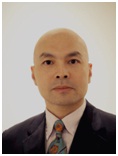(6月25日)How hydrophilic can a hydrophilic surface be?
报告题目:How hydrophilic can a hydrophilic surface be?
报 告 人: 汪大洋 教授(吉林大学,化学学院/无机合成与制备国家重点实验室)
报告时间:2019年6月25日(星期二)上午10:00 - 11:30
报告地点:化学馆120室
欢迎各位感兴趣的师生参与交流!
Abstract:
This presentation will focus mainly on our recent study of how the macroscopic wetting behaviour of charged surfaces is correlated with their microscopic chemical nature of the surface ionic groups. In this work polyelectrolyte multilayers (PEMs) were used as model charged surfaces.1With the aid of surface sensitive – spectroscopic techniques, we demonstrate the surface wetting behaviour of the PEMs is more closely correlated with the configurational geometry rather than hydrate strength of the uncompensated ionic groups on the surface capping layers2,3. The lessons learnt from the surface wetting and the internal structures of as-prepared PEMs have successfully been translated to an innovative superoleophobic coating strategy, which is simple, versatile, cost-effective, and nanostructure-independent comparing to currently available ones. This has enabled us to easily transform conventional stainless steel meshes to highly effective filters for oil-water separation in high separation efficiency and high water flux, which can be easily scaled up for industrial oil/water separations such as oil spill cleanup in seawater.
References:
1.Liu, X.; Leng,C.; Yu, L.; He, K.: Brown, L. J.; Chen, Z.; Cho, J.; Wang, D. “Ion-Specific Oil Repellency of Polyelectrolyte Multilayers in Water: Molecular Insight into Charged Surface Hydrophilicity”Angew. Chem. Int. Ed.2015,54, 4851 –4856.
2.He, K.; Duan, H.; Chen, G. Y.: Liu, X.; Yang, W.; Wang, D.; “Cleaning of Oil Fouling with Water Enabled by Zwitterionic Polyelectrolyte Coatings: Overcoming the Imperative Challenge of Oil-Water Separation Membranes,ACS Nano2015, 9, 9188-9198
3.Shu Huang, Wang, D. “Simple Nanocellulose Coating for Self-Cleaning upon Water Action: Molecular Design of Stable Surface Hydrophilicity”Angew. Chem. Int. Ed.2017, 56, 9053-9057.
报告人简介:

汪大洋,1993年于吉林大学化学系获得高分子材料本科毕业。1998年吉林大学化学系获得高分子化学与物理博士毕业,师从于汤心颐,李铁津,白玉白教授。1999– 2003年在德国马普胶体界面所 (Max Planck Institute of Colloids and Interfaces) Helmuth Möhwald教授领导的界面部做博士后研究,师从于Frank Caruso 博士。2000年11月获得德国洪堡基金会(Alexander von Humboldt Research Fellowship) 奖学金。2003– 2010年在马普胶体界面所界面部担任研究小组组长(Group Leader)。2010-2015年在澳大利亚南澳大学Ian Wark研究所任物理化学终身研究教授 (Continuing Research Professor Position)。 2014年当选英国皇家化学会会士(FRSC)。2015 - 2017年在皇家墨尔本理工大学工学院任化工系终身教授 (Continuing Professor Position)。2016年获在吉林大学化学学院与无机合成与制备化学国家重点实验室任职物理化学专业教授。汪大洋教授目前的研究兴趣是对表界面现象分子机理的探索,包括表面润湿和粘附,相转移,粒子分散与聚集与界面相分离,并且积极地将基础科学研究成果转化为新型的环境治理以及资源再利用技术。
|
